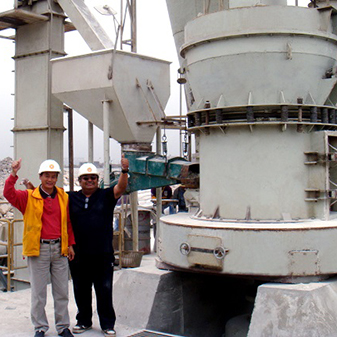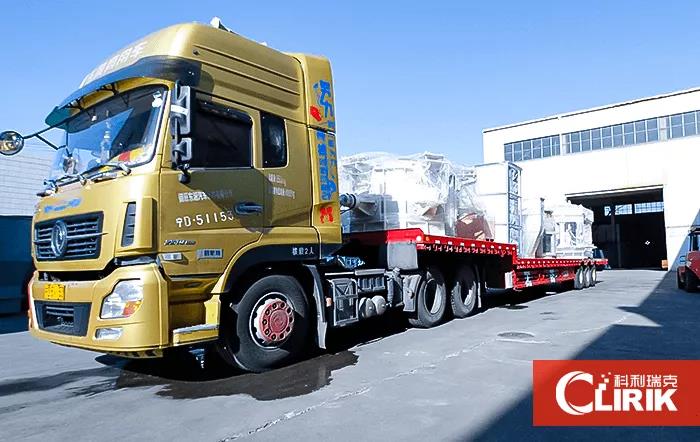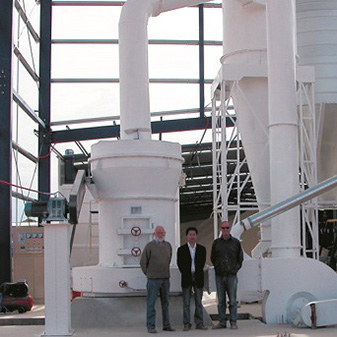Failure to maintain the proper material layer and surface shape of the vertical mill during normal operation will cause the vertical mill to vibrate. The reasons for the vibration of the vertical mill and the treatment measures are as follows:

1) Foreign matter enters the mill to cause vibration.
Metal foreign objects from inside and outside the mill, such as wind guide blades, tools left over after maintenance, etc. If it is a small metal, you can lift the grinding roller, reduce the air draft, and take it out from the feeding port of the return material; if it is a large metal, open the grinding door and take it out.
2) The material layer is too thick to cause vibration.
The amount of incoming material is too large → the material layer becomes thicker → the grinding ability is reduced → the material cannot be ground in time → there are too many unqualified powders in the grinding, and the system air volume is insufficient, and the wind speed of the spray ring decreases → the qualified powder cannot be removed Take it out of the system in time → increase the circulating concentration in the grinding chamber → return the powdered material to the grinding plate → thicken the material layer. Such a vicious circle causes the material layer to lift the grinding roller too high and cause vibration. At this time, the feeding amount should be reduced in time to ensure that the system is well ventilated and the discharge is unblocked.
3) The material layer is too thin to cause vibration.
The amount of incoming grinding material is small or the incoming grinding material is too fine, and there are many powdery materials. At this time, the material has strong fluidity and poor adhesion, and the rolling of the grinding roller makes the material on the grinding disc quickly grind into a qualified product. Excessive air volume will soon take the fine powder out of the system, making the material layer on the grinding disc too thin or unable to form an effective material layer, causing the grinding roller and the grinding disc to contact and cause vibration. At this time, the feed rate can be increased, the air flow rate can be reduced, and the water spray rate can be increased to maintain a certain material layer of the vertical mill to make it stable.
4) The material entering the mill is unstable, and the thickness of the material layer fluctuates too much.
Failure to maintain a reasonable material layer and surface shape, such as manual feeding and blockage of the feeding scale, causing large fluctuations. The measure is to feed evenly to ensure smooth feeding.
5) The air volume of the system is unreasonable.
When the system air volume is too large, the material stays in the mill for a short time, the output volume is large, and the material is small and vibrates; when the air volume is too small, the material stays in the mill for too long. Repeated grinding will cause the material to be too fine, high differential pressure and vibrate. In addition, when the moisture of the material entering the mill increases or decreases, the inlet temperature suddenly increases or decreases, and the tail exhaust air door suddenly becomes larger or smaller, which will directly affect the ventilation volume of the vertical mill. If the adjustment is not timely, it will inevitably cause vibration. Therefore, when the moisture of the material entering the mill increases, the solution should be reduced by correspondingly reducing the feeding amount, reducing the water spray, increasing the air temperature of the entering mill, and increasing the ventilation of the vertical mill.
6) The speed of the powder separator is too high.
The speed of the powder separator is too high → the finished material cannot be discharged out of the mill in time, and the material is repeatedly ground → the internal circulation is increased → the differential pressure is high → the buffer layer of the vertical mill becomes thin, causing vibration.
7) Small amount of spray water causes vibration. Small water spray → high differential pressure → thin material layer causes vibration.
8) Too large or too small particle size of the material to be milled will cause vibration.
Due to the constant speed of the grinding disc, the larger the particle size of the material to be ground, the more obvious the centrifugal effect. At this time, the grinding efficiency will decrease, and the surface shape of the material cannot be maintained. The treatment measures are: control the material layer to be slightly thicker than normal, reduce the air volume and inlet temperature, and reduce the grinding pressure. When the grinding material is too fine, most of it has been suspended in the grinding mill. However, the capacity of the classifier is limited, and the small amount of material on the grinding disc will also cause vibration.
The treatment measures are: lower the temperature, reduce the ventilation, reduce the speed of the powder separator, and increase the water spray.
Excessive vibration is a common fault in the production process of vertical mills. The reasons and solutions for excessive vibration are as mentioned above. I hope this article can help you.



